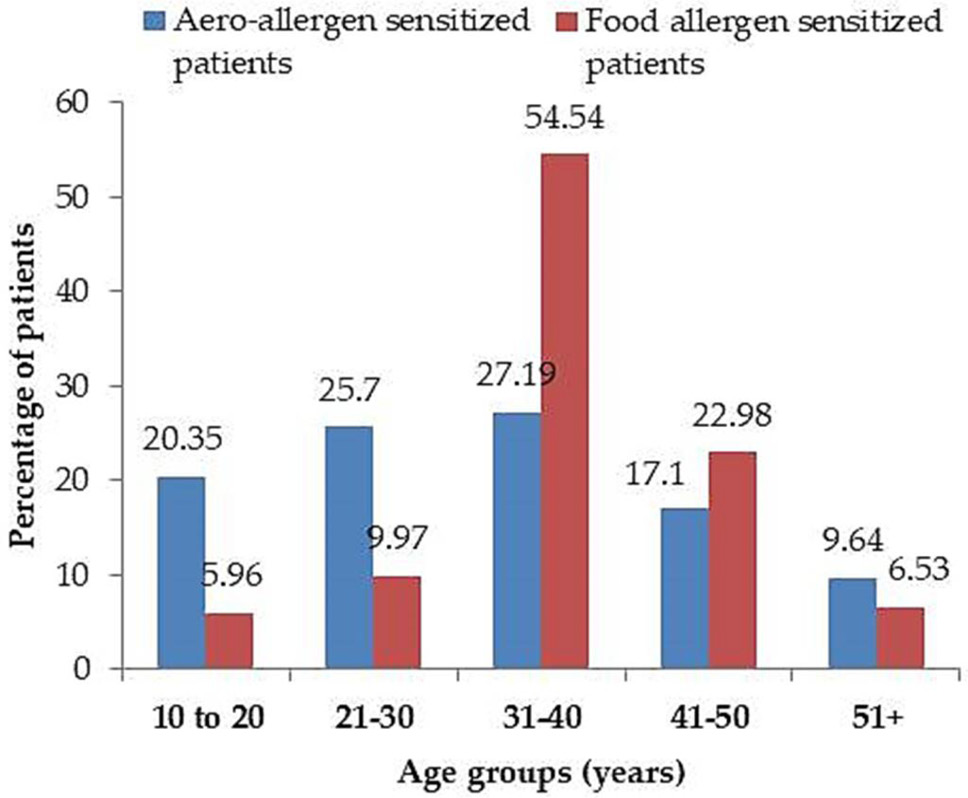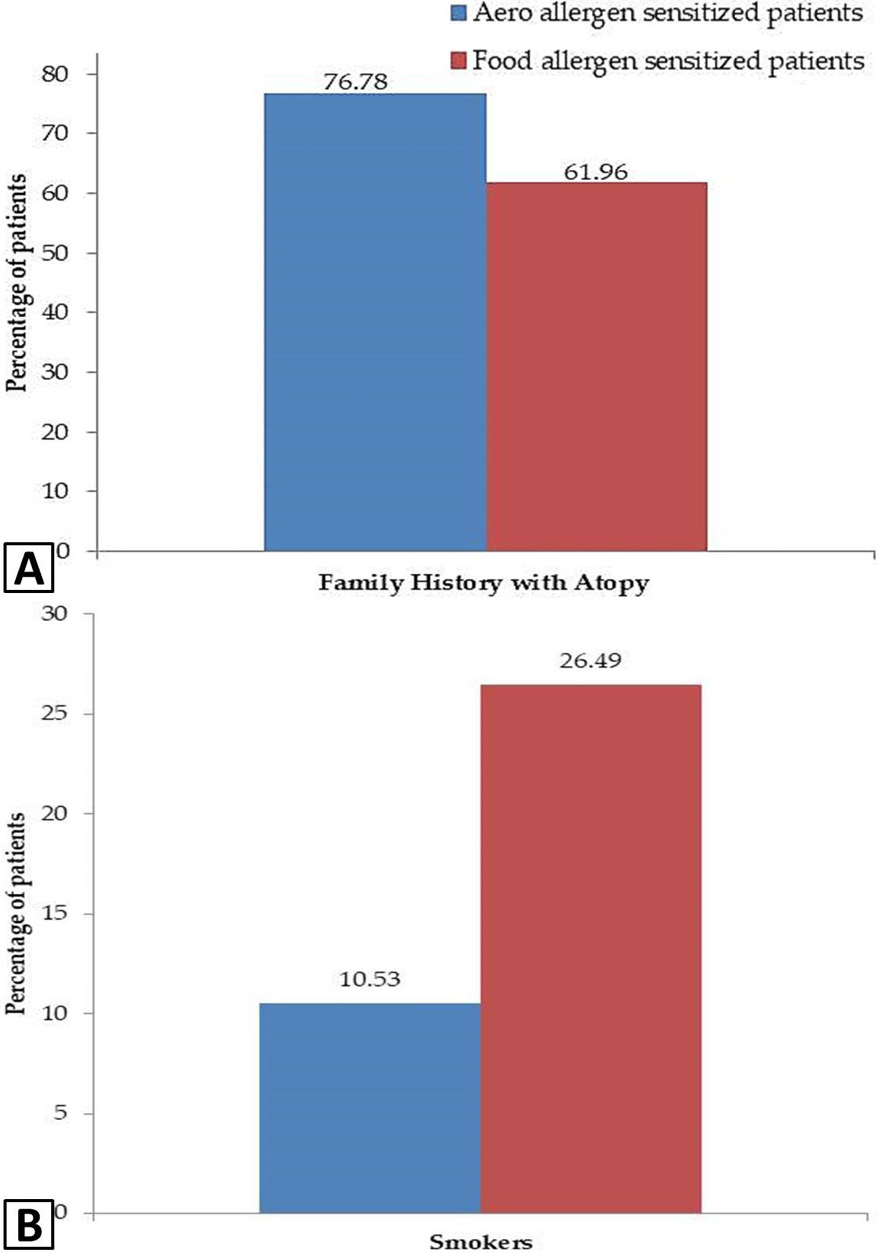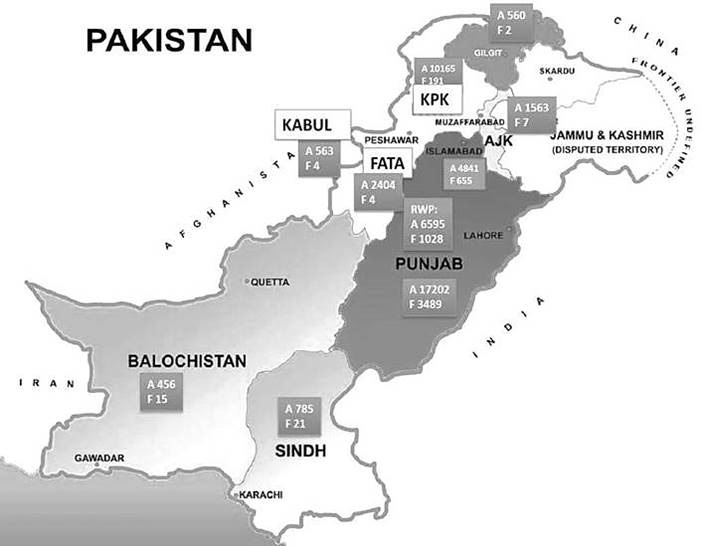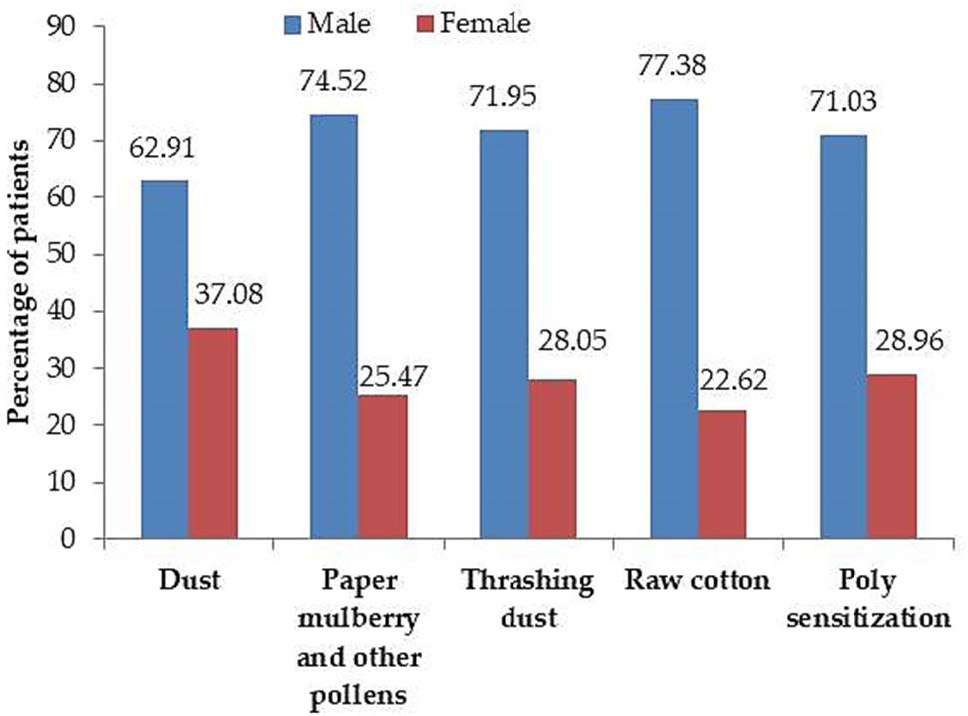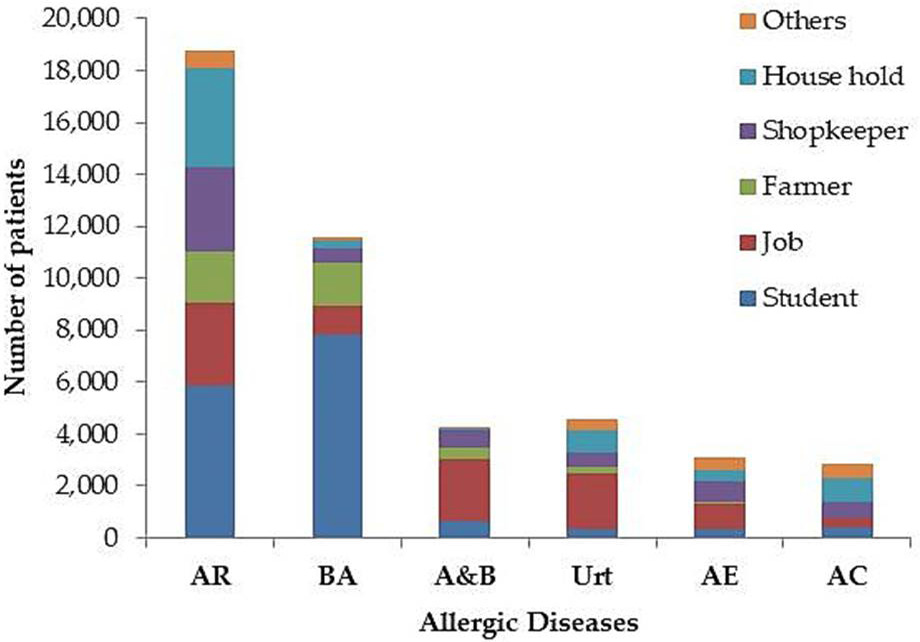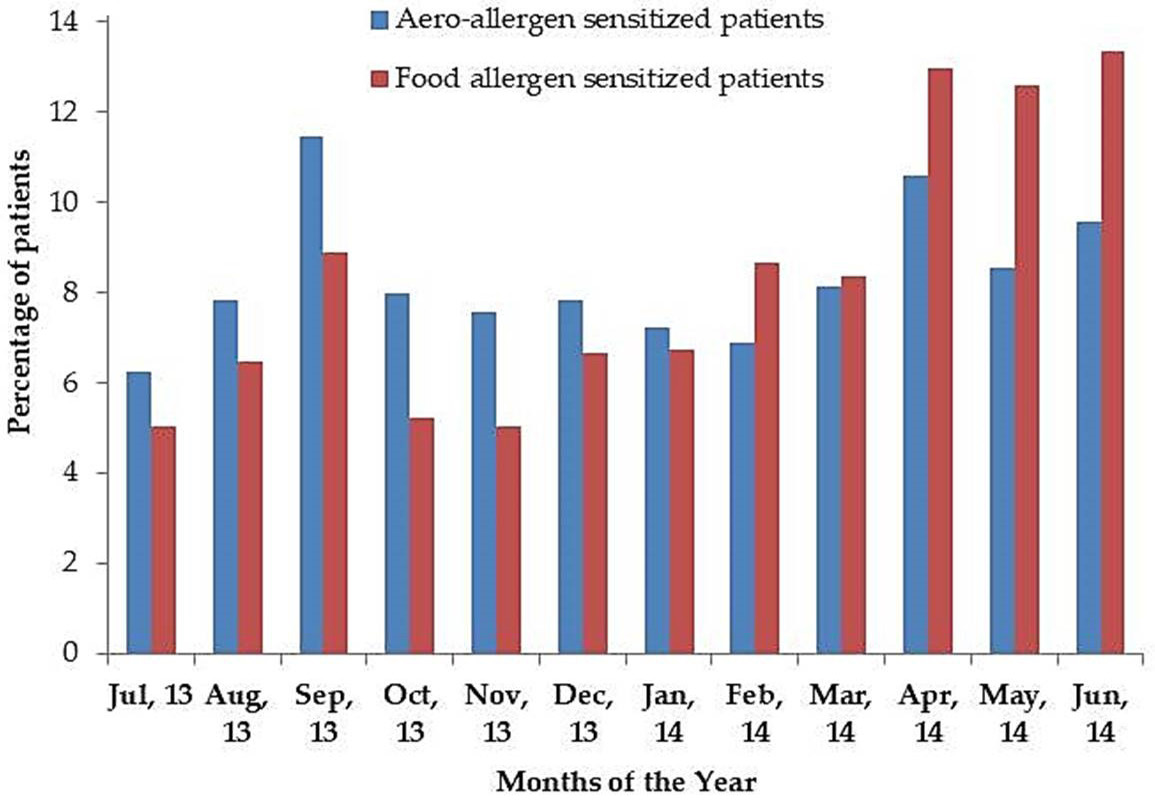Aero and Food Allergens Sensitization Patterns in a Clinic-Based Sample in Pakistan: A One Year Retrospective Study
Aero and Food Allergens Sensitization Patterns in a Clinic-Based Sample in Pakistan: A One Year Retrospective Study
Abid Hussain1,2, Farida Ahmed3, Shyamali C. Dharmage4, Shafiq ur Rehman1, Muhammad Shahbaz Aslam5 and Zaigham Abbas1,*
Prevalence of allergen sensitized patients by age groups among total 45134 aero- and 5416 food-allergen sensitized patients. 31-40 years age group was most prevalent among aero and food-allergen sensitized patients followed by that of 21-30 and 41-50.
A, pattern of family history with atopy among aero- and food-allergen sensitized patients; B, pattern of smoking among study population of aero-allergen and food-allergen sensitized patients.
Distribution of study population by professions among total 45134 aero-allergen sensitized patients (students 15439, job holders 10229, farmers 4320, shopkeepers 6450, household 6320, others 2376) and food allergen sensitized patients (students 1982, job 1545, farmer 610, shopkeeper 542, household 456, others 281).
A, prevalence of different diseases acquired by aero-allergen and food-allergen sensitized individuals (AR, allergic rhinitis; BA, bronchial asthma; A&B, allergic rhinitis and bronchial asthma; Urt, urticaria; AE, allergic eczema; AC, allergic conjunctivitis and illness with general symptoms like vomiting and abdominal cramps); B, association of aero-allergen sensitization to different allergic diseases (RC, raw cotton; TH, thrashing dust; PM, paper mulberry and other pollens; D, dust).
Geographical distribution of aero-allergen sensitized patients (Islamabad 4841, Rawalpindi 6595, Punjab 17202, Khyber Pakhtun Khawa KPK 10165, Sindh 785, Balochistan 456, Azad Jamu and Kashmir AJK 1563, Northern Area (NA) 560, FATA 2404, Kabul 563) and food allergen sensitized patients (Islamabad 655, Rawalpindi 1028, Punjab 3489, Khyber Pakhtun Khawa (KPK) 191, Sindh 21, Balochistan 15, Azad Jamu and Kashmir AJK 7, Northern Area (NA) 2, FATA 4, Kabul 4) in Pakistan. F, food allergen sensitized patients; A, aero-allergen sensitized patients.
Pattern of SPT positive aero-allergens among male and female patients. Total counts: house dust, 78.06%; pollens, 73.05%; thrashing dust, 67.64%; raw cotton, 56.90%; poly sensitization, 82.93%.
Association of professions with aero-allergic disease pattern. AR, allergic rhinitis; BA, bronchial asthma; A&B, allergic rhinitis and bronchial asthma; Urt, urticaria; AE, allergic eczema; AC, allergic conjunctivitis.
Seasonal (month wise) distribution of aero and food allergen sensitized patients during the study period. Percentages of aero-allergen sensitized patients: Jul-13, 6.26%; Aug-13, 7.83%; Sep-13, 11.46%; Oct-13, 7.98%; Nov-13, 7.59%; Dec-13, 7.82%; Jan-14, 7.24%; Feb-14, 6.89%; Mar-14, 8.14%; Apr-14, 10.58%; May-14, 8.56%; Jun-14, 9.59%. Percentages of food-allergen sensitized patients: Jul-13, 5.04%; Aug-13, 6.49%; Sep-13, 8.89%; Oct-13, 5.21%; Nov-13, 5.04%; Dec-13, 6.65%; Jan-14, 6.75%; Feb-14, 8.66%; Mar-14, 8.35%; Apr-14, 12.98%; May-14, 12.59%; Jun-14, 13.35%.







